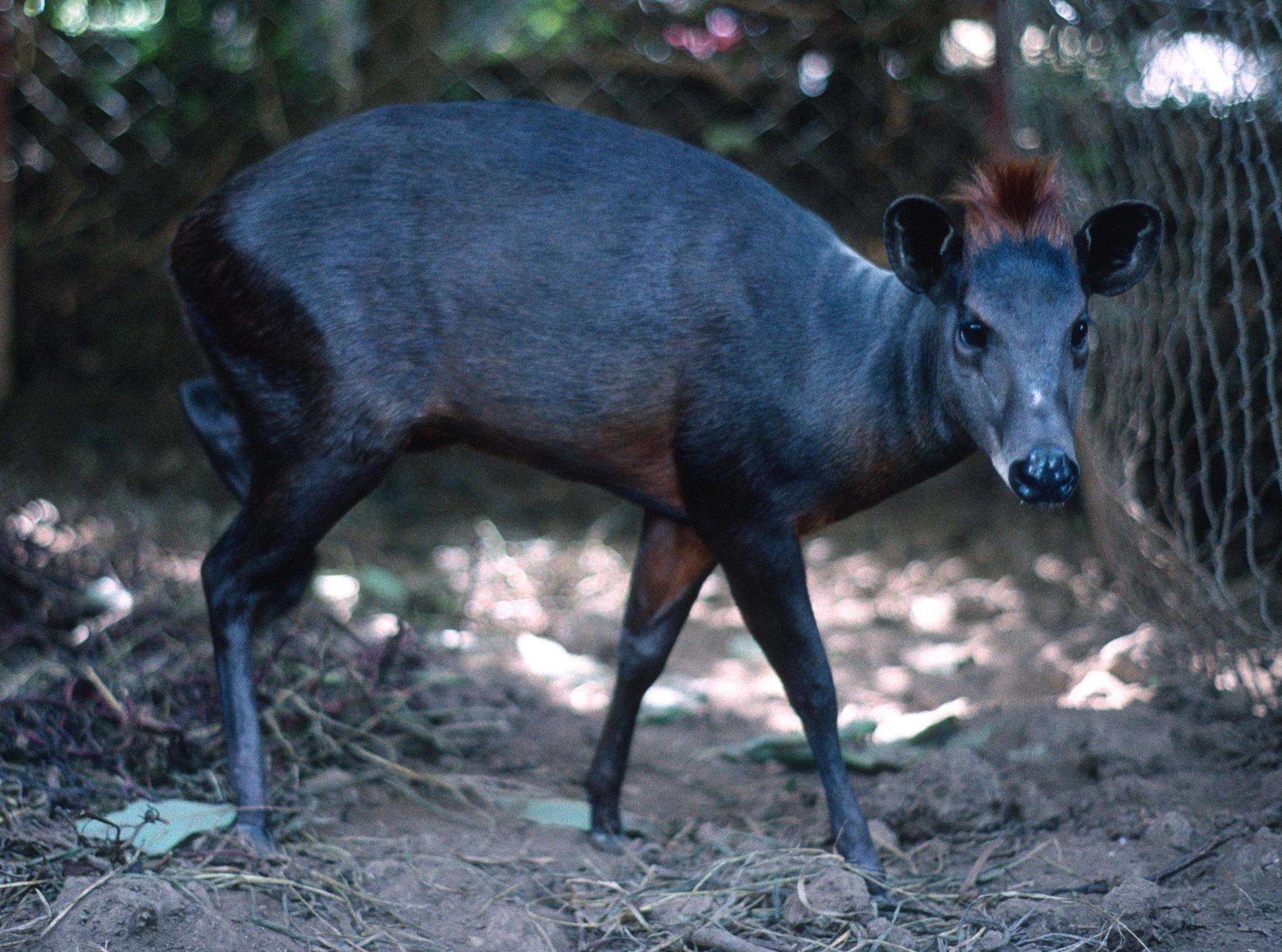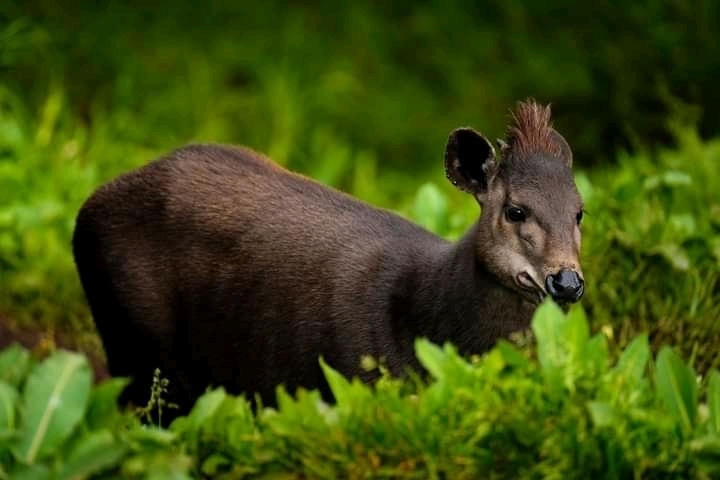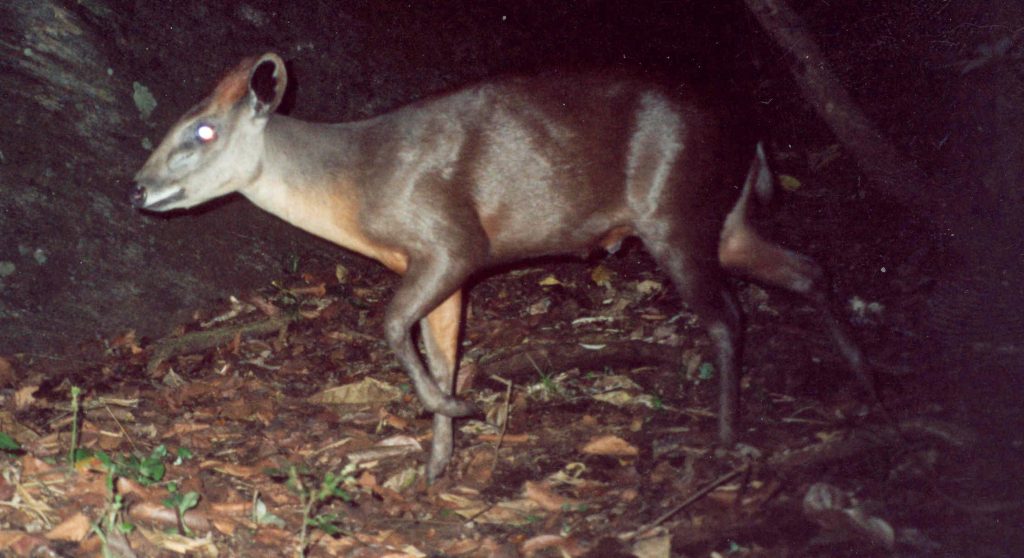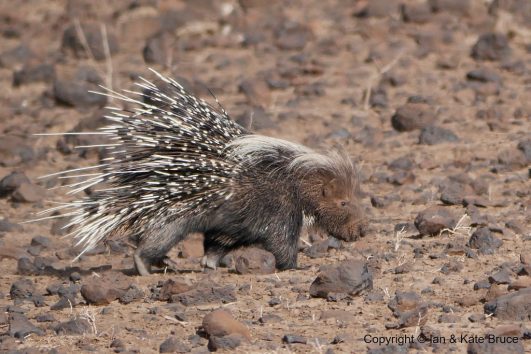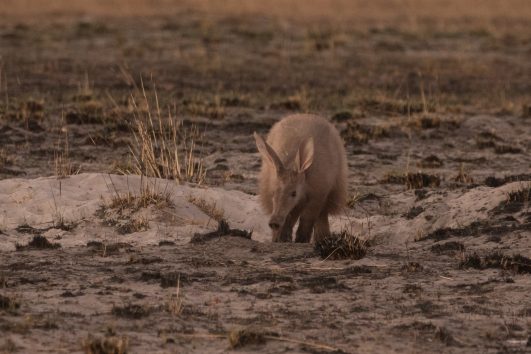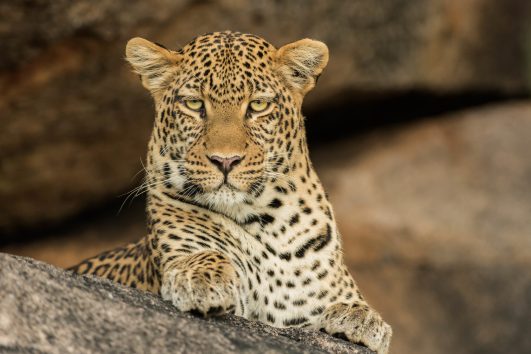Abbott’s Duiker, a diminutive and shy type of antelope known in Swahili as Minde, is one of the lesser-known species of duiker, a group of small to medium-sized antelopes found in Africa’s deeply forested areas like the Kilimanjaro National Park’s rainforest. Named after William Louis Abbott, an American naturalist, this duiker is particularly noted for its elusive nature and limited range, making it a subject of interest for conservationists and wildlife enthusiasts.
Abbott’s Duiker stands approximately 65 cm (26 inches) at the shoulder and weighs around 55 kg (121 lbs). Its coat is glossy and dark brown, with a lighter shade on the belly. The face features a paler, grey hue and sports a distinctive large red tuft on the forehead. Their horns are slender and short, measuring between 8 to 12 cm (3.1 to 4.7 inches).
This duiker is known for its secretive nature, being mostly active at night, and preferring the dense vegetation of its habitat. Due to these traits, much about its behaviour remains a mystery. Observations indicate that Abbott’s Duiker feeds on leaves in the forest understory and in clearings, with a diet likely including fruits, flowers, and moss. Interestingly, there’s also evidence of them consuming live prey like frogs, showcasing their opportunistic feeding habits.
Despite their elusive and vigilant nature, Abbott’s Duikers are not immune to predation. Young duikers are particularly vulnerable to African crowned eagles and pythons, while leopards pose a threat to duikers of all ages. In some regions, lions and spotted hyenas might also hunt them.
Physical Appearance:
- Size: Abbott’s Duiker is relatively large for a duiker, standing about 60-70 cm at the shoulder.
- Weight: They can weigh between 20 to 35 kg.
- Fur: Their fur is dense and typically a dark brown to black, which helps in camouflage within their dense forest habitat.
- Horns: Both males and females have small, pointed horns, which are straight or slightly curved backward. These horns can grow up to 15 cm.
Adaptations:
- Camouflage: Their dark fur and small size allow them to blend into the underbrush, providing protection from predators.
- Dietary Adaptations: They are primarily browsers, feeding on leaves, fruits, and occasionally small invertebrates. Their digestive system is adapted for breaking down fibrous plant material.
- Behavioural: They are crepuscular, meaning they are most active during dawn and dusk, which helps them avoid both the heat of the day and nocturnal predators.
- Sensory: Abbott’s Duiker has keen senses of smell and hearing, crucial for detecting predators in the dense forest environment.
Habitat:
- Range: Abbott’s Duiker is endemic to the Eastern Arc Mountains of Tanzania, particularly in the Udzungwa Mountains National Park. They are also found in other isolated forest patches in this region.
- Environment: They prefer montane and submontane rainforests, often at altitudes between 600 to 2,000 meters above sea level. These forests provide the dense undergrowth necessary for their secretive lifestyle.
- Habitat Specifics: The dense vegetation not only offers protection but also a variety of food sources. Their habitat is characterized by high humidity, which supports the growth of the plants they feed on.
Conservation Status: Due to habitat loss from logging and agriculture, as well as hunting, Abbott’s Duiker is considered vulnerable by the IUCN Red List. Conservation efforts focus on protecting their forest habitats and controlling hunting activities.
Additional information
| Habitat | Kilimanjaro National Park, Mount Meru, Mount Kenya, Rwenzori |
|---|

